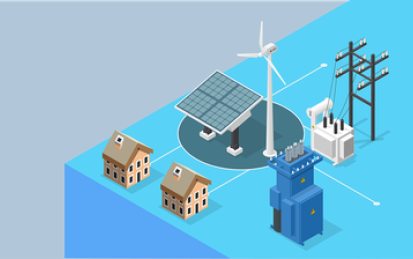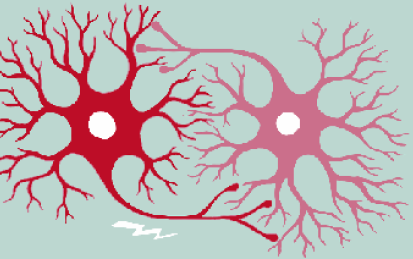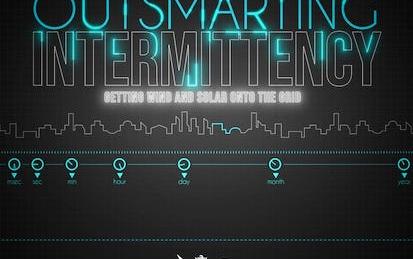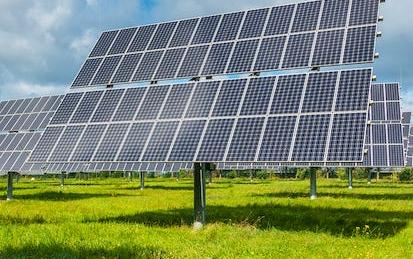

Our Courses

Incorporating Renewable Energy in Electricity Grids
Learn how to manage high shares of variable renewable electricity sources to achieve cost-effective and reliable electricity supplies
-
Course by

-
 Self Paced
Self Paced
-
 20
20
-
 English
English

Solar Energy: Photovoltaic (PV) Energy Conversion
Learn how solar cells generate electricity, and about the semiconductor physics and optics required to design and manufacture solar cells.
-
Course by

-
 Self Paced
Self Paced
-
 45
45
-
 English
English

Electrodynamics
If you want to apply electrodynamics to your materials research project, this Specialization will help you do so. Electromagnetic force is one of the fundamental forces that hold atoms and molecules together, which are the building blocks of any materials.In four courses, you will learn the foundations of electrodynamics starting from the nature of electrical force up to the level of in-depth solutions of Maxwell equations. We will walk you through vector calculus, concepts of field, flux and circulation, electrostatics, and magnetostatics as well as electrodynamics.
-
Course by

-
 Self Paced
Self Paced
-
 English
English

Fundamentals of Neuroscience, Part 1: The Electrical Properties of the Neuron
Learn how electricity makes the neurons in your brain tick.
-
Course by

-
 Self Paced
Self Paced
-
 32
32
-
 English
English

Solar Energy Systems Overview
By the end of this course, learners will have acquired a broad understanding of the history and mechanics behind converting light into electricity, commonly known as photovoltaics (PV). They are empowered to recognize and describe elements of a PV system, enabling them to: compare the most common types of solar cells, sketch a solar PV system, and analyze differences between rooftop and ground mounting configurations.
-
Course by

-
 Self Paced
Self Paced
-
 9 hours
9 hours
-
 English
English

A Practitioner's Approach to Power Distribution & Automation
Our specialization is a blend of basic and emerging technology in the power distribution sector through two unique courses. First course is Electrical Power Distribution wherein we deal from concept to commissioning level, give exposure to the learners statutory regulations, the different distribution equipment like distribution transformers, pole mounted substation, auto reclosure, sectionlizers, Compact Substation, Ring Main unit.
-
Course by

-
 Self Paced
Self Paced
-
 English
English

Outsmarting intermittency
Solar and wind offer clean and renewable ways to produce large amounts of electricity. They have boomed over the last few years, evolving from an eco-daydream to a major market and showing unprecedented growth rates. Yet, installing solar panels and wind turbines is by no means the end of the story. The electrical grid, which connects production means to the end-users’ sockets, is not a simple electron pipe. It is the beating heart of our electricity system and ensures its stability.
-
Course by

-
 Self Paced
Self Paced
-
 2 hours
2 hours
-
 English
English

Electrodynamics: Analysis of Electric Fields
This course is a continuation of Electrodynamics: An Introduction. Here, we will cover different methods of calculating an electric field. In addition, we will introduce polarization, dielectrics, and how electric fields create dipoles.
-
Course by

-
 Self Paced
Self Paced
-
 11 hours
11 hours
-
 English
English

Basics of Electrical Protection System
Power system protection and switchgear plays a crucial role in establishing reliable electrical power systems. Improperly designed protection systems can lead to major power failures. Due to the increasing dependency of electricity, such power failures can have a serious impact on society and the economy. Application knowledge of power system-protection is key when it comes to optimizing the reliability level of electrical infrastructure.
-
Course by

-
 Self Paced
Self Paced
-
 13 hours
13 hours
-
 English
English

Electrodynamics: In-depth Solutions for Maxwell’s Equations
This course is the fourth course in the Electrodynamics series, and is directly proceeded by Electrodynamics: Electric and Magnetic Fields. Previously, we have learned about visualization of fields and solutions which were not time dependent. Here, we will return to Maxwell's Equations and use them to produce wave equations which can be used to analyze complex systems, such as oscillating dipoles.
-
Course by

-
 Self Paced
Self Paced
-
 English
English

Renewable Energy Futures
Renewable energy's future is bright, yet uncertain. Will it continue to grow rapidly? Is current growth sufficient to achieve climate stabilization? How do related technologies, like electric vehicles and heat pumps, fit in? This course will shed light on the many confusing and at-times inconsistent claims and predictions for renewable energy. We’ll review promising new renewable technologies and approaches, such as floating platforms for wind turbines and building-integrated photovoltaics (PV), and point out key opportunities and limitations.
-
Course by

-
 Self Paced
Self Paced
-
 16 hours
16 hours
-
 English
English

Disaster Preparedness
Have you ever viewed a news report depicting the aftermath of a devastating natural disaster? The damage to human life and property are both staggering and heartbreaking. All parts of the world face the possibility of floods, hurricanes, tornados, fires, landslides, earthquakes, tsunamis, and other natural phenomena. Are you prepared if disaster would strike you? This course will help you prepare! The course is appropriate for any learner who is proactive about developing the core competencies of disaster readiness and survival planning.
-
Course by

-
 Self Paced
Self Paced
-
 13 hours
13 hours
-
 English
English

Discrete Optimization
Tired of solving Sudokus by hand? This class teaches you how to solve complex search problems with discrete optimization concepts and algorithms, including constraint programming, local search, and mixed-integer programming. Optimization technology is ubiquitous in our society. It schedules planes and their crews, coordinates the production of steel, and organizes the transportation of iron ore from the mines to the ports. Optimization clears the day-ahead and real-time markets to deliver electricity to millions of people.
-
Course by

-
 Self Paced
Self Paced
-
 65 hours
65 hours
-
 English
English

Solar Energy Basics
This course gives you an introduction to the fundamentals of solar power as it applies to solar panel system installations. You will learn to compare solar energy to other energy resources and explain how solar panels, or photovoltaics (PV for short), convert sunlight to electricity. You will be able to identify the key components needed in a basic photovoltaic (solar panel) system, such as is found on a house or building, and explain the function of each component in the system.
-
Course by

-
 Self Paced
Self Paced
-
 15 hours
15 hours
-
 English
English



